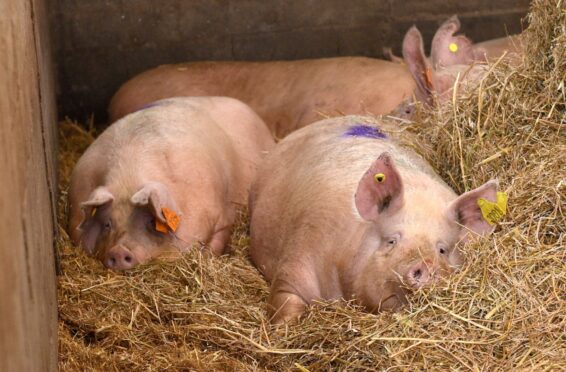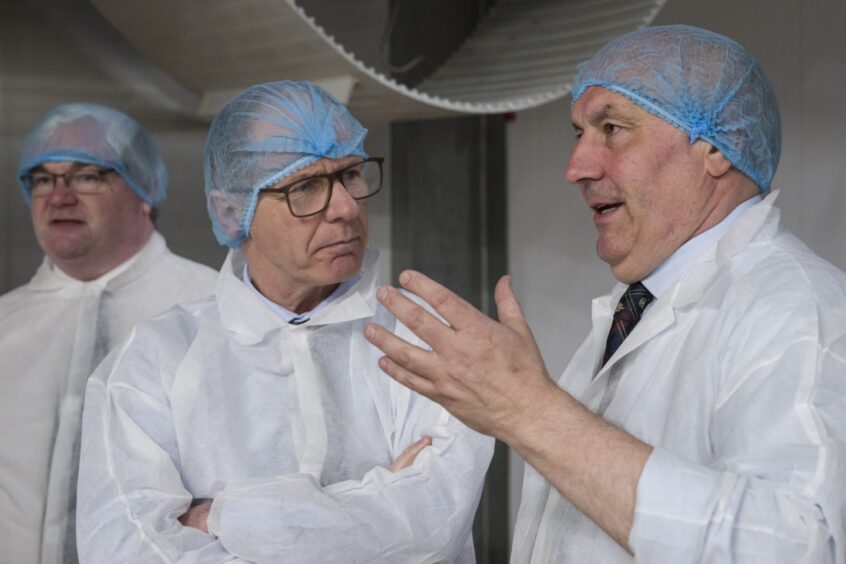A new national disease control project aims to eradicate one of the biggest threats to the pig farming industry.
The Scottish Government has provided almost £450,000 for a new Porcine Reproductive and Respiratory Syndrome (PRRS) prevention initiative across the country.
It is hoped the funds will help wipe out the devastating virus – also known as blue ear disease – and improve biosecurity standards on commercial pig farms.
The PRRC project will see affected premises tested, data shared and controls put in place to prevent spread between farms.
A biosecurity app will also be used to allow farmers to get a tailored assessment of their biosecurity on farm to help them prevent disease spread between premises.
The £438,700 funding will be managed by Wholesome Pigs (Scotland) Ltd – a not-for-profit company owned by all commercial pig farmers in Scotland.
PRRS causes reproductive failure in sows and respiratory problems in weaners up to finisher pigs.
Once within a herd it can be transmitted by nose-to-nose contact, breeding with infected males, sow to piglet during pregnancy, close contact with slurry and even birds and insects moving from animal to animal.
Infected sows that are able to get pregnant often have smaller litters, a greater number of stillborn piglets and weaker young.
Agriculture Minister Jim Fairlie said: “The impact of a disease infecting a farm can be devastating to a farmer and this project will be a real benefit to the sector which is already taking steps to deal with PRRS though vaccination.
Improving biosecurity as a result of this project will also help prevent the introduction of other pig diseases, such as African Swine Fever (ASF), which is currently spreading across Europe.
“The costs of controlling an ASF outbreak are huge, with the knock-on costs of losing export markets, so it is absolutely vital that government and farmers work together to take steps to protect Scottish agriculture businesses, improve animal health and welfare standards, reduce the reliance on veterinary medicines, and increase productivity through the introduction of practical solutions, like this project.”
Director of Wholesome Pigs (Scotland) Ltd Andy McGowan said: “The Scottish pig sector has an admirable track record of collaborating to control and eliminate disease, contributing to a 38% reduction in carbon emissions per kilo over the past two decades.
“This substantial and very welcome investment from Scottish Government into veterinary testing, data sharing and coordination systems will ensure that our sector continues to be part of the solution to providing affordable, high-quality food for Scottish consumers whilst achieving the ambitious transition towards Net Zero.”

